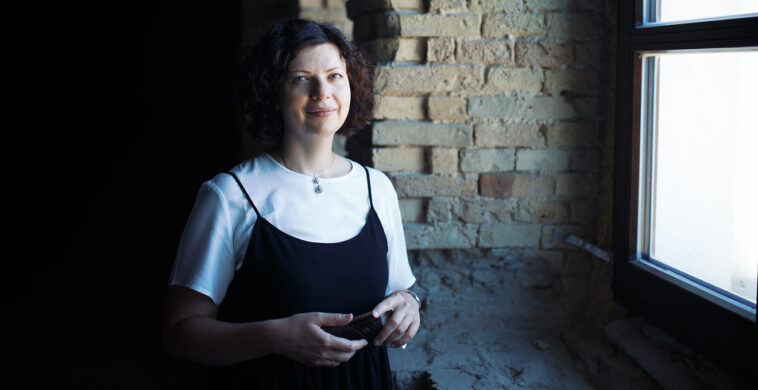More than 100 years ago, Rainer Maria Rilke wrote in his novel Notebooks of Malte Laurids Brigge that we depend on our family heirlooms—house, furniture, books and everything our family has owned for scores of years—to give us our roots. All these things lend the world around us—and us in that world—a firm foundation, granting us certain powers and making our existence more meaningful. Those old walls, dark wardrobes, paintings in worm-eaten frames, and yellow photographs passed down from generation to generation create a continuity that we so need to lean on in times of crisis. Half a century later, Milan Kundera expressed a similar feeling in his novel The Unbearable Lightness of Being: cut off from what was previously stable, a person becomes very much like a balloon that drifts weightlessly, dazed by the insignificance of their life.
Or take Kate Atkinson’s Behind the Scenes at the Museum. I finished reading it a few days before Russia’s devastating, horrific attack on Ukraine in the night after February 23rd—literally just before the Russian atrocities started in Ukrainian cities. In Atkinson’s novel, the entire plot revolves around an old photograph of a woman named Alice. Page after page, we learn about the life of Alice’s descendants, each of whom has kept one of her photos. Namely, this is about the connection between Destiny and Thing—a tie that gives us our sense of continuity.
I am writing this in Kyiv but am cut off from my library, and so I cannot look up quotes or check plotlines; I have to rely on my memory alone. As I’m writing, I can watch in real time—thanks to modern technology—the Russians bombarding my suburban neighbourhood, blowing up places I know, their rockets destroying architectural ensembles that had survived even WWII. And I recall something else.
The hot June of 2021 in Kyiv. My institution—the Art Arsenal, Ukraine’s largest cultural center— holds a festival called the Book Arsenal. Tens of thousands of people milling about, thousands upon thousands of books, hundreds of events, jokes about “our literary Woodstock” from my writer friends, evening concerts in the heart of the old city, hugs all around. I’m taking part in a panel discussion about charity and culture. Suddenly it occurs to me that my generation, people 40+ years of age, is the first generation of Ukrainians to inherit any kind of material assets. Our grandmothers lived through two world wars, the Holodomor and the Holocaust, dispossession and expulsion to Siberia, had nothing to pass down. They only lost, again and again. In my family, for example, my peasant grandparents had inherited morgens of agricultural land from their parents. Land was the most valuable resource. This zemlia land was later expropriated from them, and my mother sometimes recalled how her father had told her: “I can’t give you anything, so you must study and provide for your own self.” Our parents gathered up their possessions and scraped together a living from the smouldering ashes of WWII. The cities in Ukraine lay in ruins, buildings destroyed, and the antique furniture, china, paintings, and even photographs—everything that is passed down from one generation to another—had been lost in the terrible destruction. So that is why only my generation inherited something—or at least was supposed to—from their families, even if it was no more than an old Soviet apartment, a tiny dacha land plot, a collection of books, or a dusty cut-glass table set. Whatever it was, we were the first to inherit in a long, long time.
Or let’s take Ukrainian museums and archives. Back in the early 20th century, the most valuable items were removed to Moscow and St. Petersburg. I believe that even the archives of the Ukrainian National Republic are still there. The works of outstanding artists, such as frescoes by the brilliant modernist Mykhailo Boychuk, were labeled as contradicting Soviet ideology and destroyed. The artists, meanwhile, were shot, executed. In WWII, many Ukrainian museum collections left the country together with the Germans; many others were lost in the constant bombing. In a telling example, just a few days before the Russian invasion we at the Art Arsenal closed an exhibition titled “Futuromarennia” https://artarsenal.in.ua/en/vystavka/futuromarennia-2/
This broad panorama of Ukrainian Futurism displayed paintings, graphic arts, embroidery, cinema, literary works, theatrical costumes, reconstructed theatrical props, etc. Designing it took an enormous effort, with scarce surviving material gleaned from various sources and painstaking put together into a representative whole. Now all those works are in danger again. Everything that had been tracked down, preserved, presented to the public, and welcomed as our heritage for the upcoming generations, is being destroyed by the Russians.
Russian artillery and aircraft are bombarding our cities. For example, the 1920s ensemble of Constructivist architecture in the heart of Kharkiv, is being repeatedly hit by rockets. They destroy everything which, as I was thinking during that panel discussion last summer, my generation finally inherited de facto for the first time in a hundred years. Once again we are facing the unbearable lightness of being—lack of the things which, according to Rilke, give you the sense of ground under your feet. Not only beautiful architecture and museum artworks, but even something as simple as your parents’ flat in that old Soviet-era nine-storied building. Once again, we are one on one with emptiness.
Olesia Ostrovska-Liuta
Kyiv, 6 March 2022


